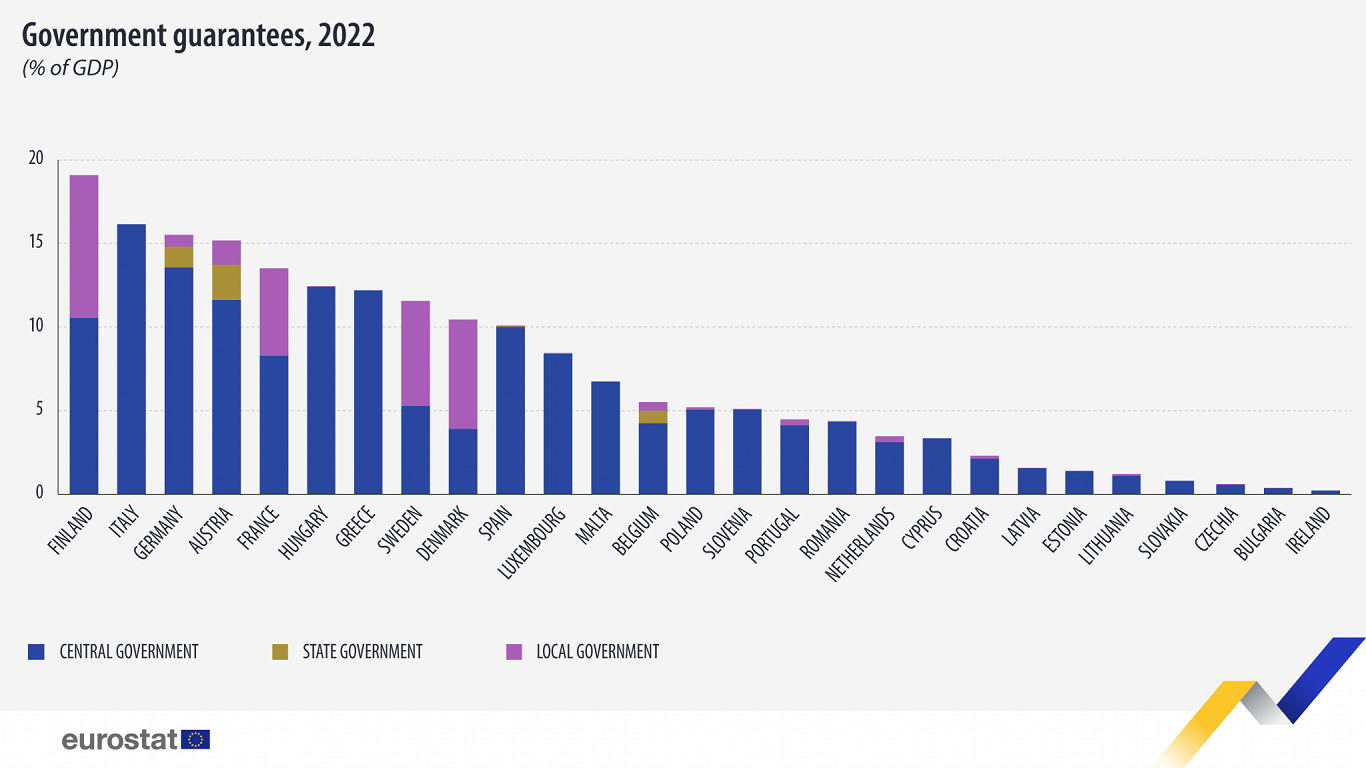In 2022, the level of government guarantees was further influenced by the ensuing energy crisis, following the Russian aggression against Ukraine.
However, Latvia and the other Baltic states still record relatively low levels of government guarantees on liabilities, according to Eurostat data published January 31.
In 2022, the highest overall rate of government guarantees was recorded in Finland (19.1% of GDP), Italy (16.3%), Germany (15.5%), Austria (15.2%) and France (13.5%). On the lower end of the scale, rates of less than 1% of GDP were recorded in Ireland, Bulgaria, Czechia and Slovakia.
For Latvia the figure was 1.57%, for Estonia it was 1.39% and for Lithuania it was 1.21%.
This information comes from data on contingent liabilities and non-performing loans published by Eurostat today.






























